|
|
|
 |
Main Features |
|
- Wide ranging Device Support capability
Supports In-System Programming (ISP) of many popular FLASH Microcontrollers, Serial EEPROM and serial FLASH Memories
- High-speed Programming
Optimised algorithms, on-board project data storage and high-speed line-driver circuitry delivers the fastest possible programming times
- Supports most ISP Protocols
SPI, JTAG, I2C (2-wire), SCI, BDM, PDI
- Excellent Host Control connectivity
USB, RS232, RS485 (up to 32 programmers)
- Gangable ISP Programming solution
Up to 32 x programmers can be controlled from a single PC using the RS485 Bus
Suitable for programming 'PCB Panels' using multiple programmers.
- Standalone Operation
Programmers can operate without PC Control using LCD / keypad or 4-wire TTL control port
- Supports up to 64 Independent 'Programming Projects'
- Each project supports programming of a complete device inc. FLASH, EEPROM, Fuses etc.
- Fully ESD and Over-voltage protected I/O
All Target I/O pins feature both ESD and over-voltage protection
- User-replaceable line-driver circuit board
All programmer line driver circuitry can be replaced in minutes in case of damage.
- Programmer Controlled Target Power Supply
The programmer can switch 1.8 to 5.0V @ 300mA to the Target System
- User-swappable I/O Connector Modules
Many different I/O Connector Modules are available to suit any required connection system.
- Firmware upgradeable
New algorithms and features can be added via a simple firmware upgrade
- Simple ATE / Test Fixture Integration
Features a 4-wire TTL 'ATE Interface / Remote Control Port' which supports control via any ATE, ICT or Test Fixture.
|
 |
Main Product Pictures |
|
|
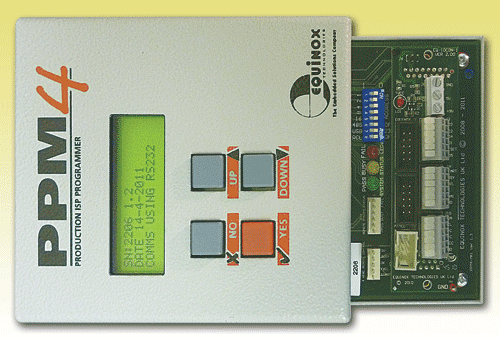
|
 |
LCD and Keypad |
|
|
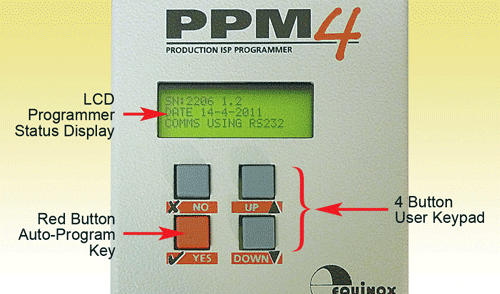
|
 |
Communications Connectors (Rear Panel) |
|
|
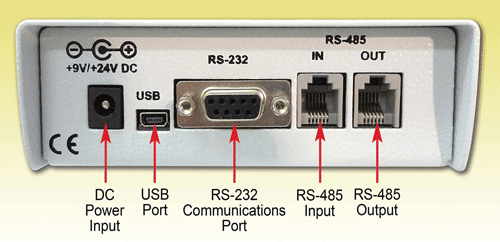
|
 |
I/O Module and TTL Port |
|
|
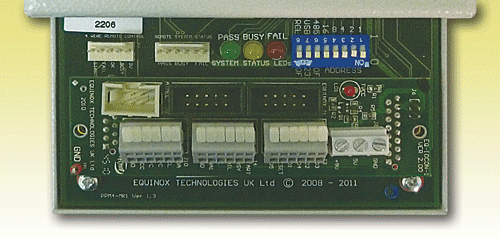
|
 |
Standalone Programming Mode (no PC) |
|
|
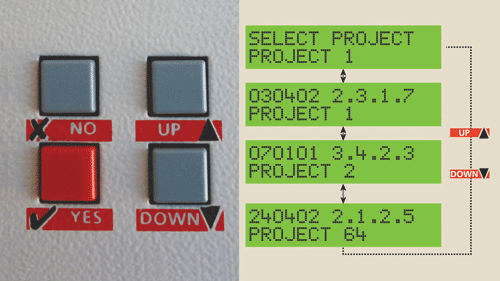
In ‘Standalone Mode’, the programmer can be controlled via the programmer keypad, Test Fixture Lid Switch START Signal or via the 'ATE Interface / Remote Control Port' - no PC connection is required. The programmer LCD and the LED Status Indicators are used to display the current status of the programmer. It is possible to select from 1 of 64 previously uploaded 'Programming Projects' and then to repeatedly execute this project by pressing the [YES] button to program a batch of devices.
In Standalone Mode...
- Programmer is completely portable as no PC connection is required
- Programmer supports storage up to 64 x independent Programming Projects in the non-volatile On-board 4Mbits FLASH Memory Store .
- The operator simply selects the required project using LCD and keypad
- Each project name is version controlled showing the project name, date, firmware revision and build date. e.g. myproject-240402-2.3.4.12
- Single key auto-program mode
- Remote ATE or ICT System can remotely start a single project and then monitor the status via the 'ATE Interface / Remote Control Port'
- Simple PASS / FAIL response on display and via PASS / BUSY / FAIL LEDs
- Multiple Programming Projects can be chained together to create complex Program Test Firmware -> Run Target -> Program Production Firmware sequences
- Operator can not inadvertently change the programming data or settings
|
 |
Remote System connects to the TTL Port |
|
|
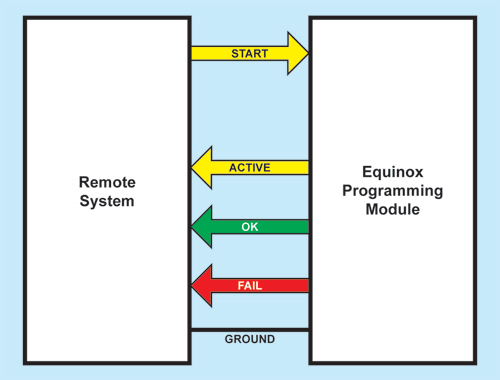
|
 |
PPM4 Connected to Bed-of-Nails Test Fixture |
|
|
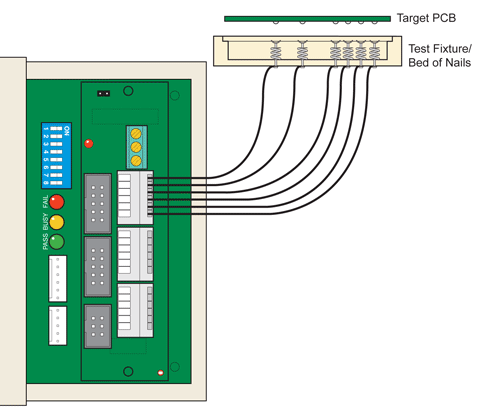
|
 |
Gang Programming Capability |
|
|
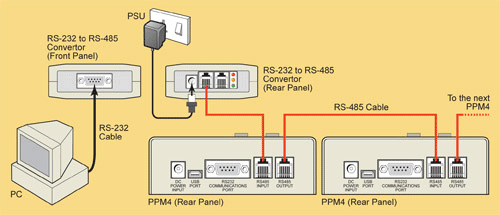
|
- Up to 32 x PPM4-MK1 Programming Modules can be daisy-chained from a single PC via the Equinox RS-485 Programmer Bus.
-
This allows a multi-channel 'Gang ISP Programming' solution to be achieved.
-
Each channnel can program a Target System independently of the other programmers (full asynchronous programming).
-
This networking solution
-
Very high programming throughputs can be achieved in Production Environments by using multiple modules programming in parallel.
-
This method also supports programming of 2 or more Target Devices on the same Target System.
-
Multiple programmers on the RS485 network can be controlled either by the ISP-PRO or ConsoleEDS utilities.
-
An RS-485 Converter is required to implement multi-channel programming.
|
 |
Interchangeable I/O Driver Circuitry (SFM Modules) |
|
|
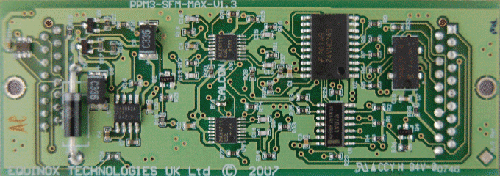
The 'Special Function Module contains the main 'I/O Driver Circuitry' which interfaces the programmer electronics to the Target System. This module is interchangeable allowing a programmer to be repaired or upgrades in minutes by simply swapping the module.
The following 'Special Function Modules' are available for this programmer:
- EQ-SFM-1 – Standard Special Function Module
- EQ-SFM-MAX-V1.3 – High Speed / ESD Protected + 32 kHz
For further information, click the relevant link in the Associated Products section on the right-hand side of the page.
|
 |
Supports all popular ISP Headers to connect to the Target System |
|
|
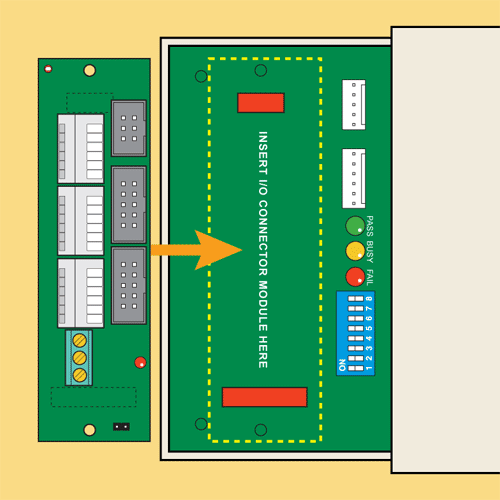
|
- Interchangeable 'I/O Connector Modules' support all popular ISP Header formats:
-
Atmel 10-way SPI Header (as per STK200 / STK500)
-
Atmel 6-way SPI Header
-
Equinox 10-way SPI header with support for Slave Select & SCK2
-
Atmel 10-way JTAG header (as per Atmel JTAG-ICE)
-
Equinox 10-way UART header for Atmel T89C51Rx2 (8051) and NXP (Philips) P89C51 ISP FLASH microcontrollers
-
Fast Connect - clip-in wire connectors
-
Wire-wrap connectors
|
 |
Programmer Control Methods (chargeable License Upgrades) |
|
- ConsoleEDS - Command Line control utility
-
ISP-PRO - Production Monitoring Software
-
Remote Application Control - control via a custom application written in eg. Visual Basic, C++, C Builder
-
Labview Control - control via a custom Labview 6 application
|
 |
Programmer Control Methods (enabled as standard) |
|
- Development Mode - using Equinox Development Suite (EDS) under PC control
-
Standalone Keypad Mode - Project Selection via keypad / LCD. Press key to perform an autoprogram operation (no PC required).
-
Standalone Target Sense Mode
-
ASCII Text Communications - RS-232 serial control
-
'ATE Interface / Remote Control Port' (4-Wire TTL Control) - control via Remote system using 4 control signals
|
 |
PC Configuration / Driver Software - EQTools Software |
|
- Equinox Development Suite (EDS)
-
Project Builder - to create/edit Programming Projects
-
Project Manager - to create and maintain Project Collections
-
Project Upload / Download Utility - to upload projects to the programmer for use in Standalone Mode
|
 |
Programming Interfaces Supported |
|
- Atmel 3-wire SPI Interface + RESET - Atmel AVR and AT89S microcontrollers
-
Zensys - 3-wire SPI + RESET + PROG_ENABLE
-
JTAG - for Atmel AVR (supports JTAG chain programming)
-
JTAG - for AT91SAM7 (supports JTAG chain programming)
-
JTAG - for ATxmega AVR (due Q4 2009)
-
Atmel UART Bootloader - Atmel 89C51Rx2 (TXD, RXD, PSEN & RESET)
-
NXP (Philips) UART Bootloader - P89CRx2/66x (TXD, RXD, PSEN & RESET)
-
I2C Interface (SDA + SCL)
|
 |
JTAG ISP Programming support |
|
|

|
- Supports high-speed JTAG programming of a single Atmel AVR microcontroller or AT91SAM7 ARM microcontroller connected via the JTAG interface
-
Supports high-speed JTAG programming of multiple Atmel AVR or AT91SAM7 microcontrollers which are connected as part of a 'JTAG Chain' (JTAG daisy-chain mode).
-
Fast programming speeds via JTAG (3 - 4 times faster than SPI method)
-
Simple 4-wire JTAG Interface to microcontroller
-
Same JTAG Interface as Atmel JTAG ICE MK2 Debugger
-
User-selectable JTAG frequency
-
Supports JTAG Chain Validation
-
Supports checking of the 'JTAG ID' of both AVR and any generic JTAG devices eg. CPLD's
-
Supports automatic checking of 'Silicon Revision' of target JTAG device
-
The JTAG algorithms can be purchased as a License Upgrade to the standard PPM3-MK2 programmer (Order code: PPM4MK1-UPG7)
-
The JTAG I/O Connector Module IO-CON-3 is required to connect to an Atmel JTAG Target System.
|
 |
AVR Internal RC Oscillator Calibration |
|
|
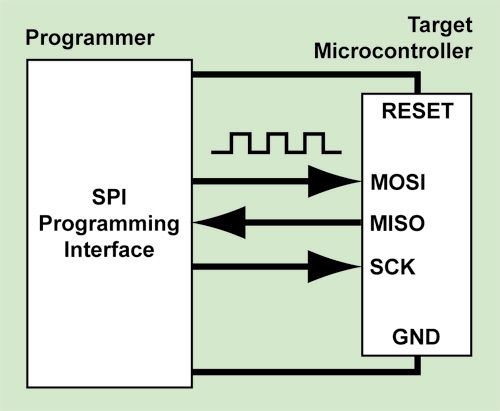
The PPM4-MK1 programmer can be used to perform a very accurate Calibration (+/1 1%) of the Internal Oscillator of many Atmel AVR microcontrollers. This requires the use of the 'EQ-SFM-MAX-V1.3' module.
|
 |
Hardware Features |
|
|
The PPM4 Programmer features state-of-the-art technology which delivers the fastest possible programming times together with the best I/O protection in a compact simple-to-use module.
- 20 x 4 character backlit display
- 4 key user keypad
- Single button autoprogram start key
- 9 to 24V DC power supply input
- Five digital Target I/O I/O lines
- User configurable RESET line with separate HIGH and LOW drive
- Dedicated 2-wire I2C Port with 400pF drive capability
- 1 x analog output line
- 1 x programmable output voltage (1.8 to 5.0V @300mA)
- Target System Voltage and Current Monitoring
- Short-circuit protected Target Power Supply
- 1 x fixed +12V Vpp voltage on RESET pin
- 1 x programmable clock output
- Full ESD and Over-voltage protection per I/O pin
- All I/O Driver Circuitry on a removeable module for easy replacement
- All I/O Connector Circuitry is on a seprate I/O Connector Module
- 3 x Status (PASS, BUSY, FAIL) LEDs on the programmer
- 1 x Remote LED Port to allow mounting of Remote LEDs on a
- Test Fixture
- 'ATE Interface / Remote Control Port' with START, BUSY, PASS and FAIL signals (to interface to ATE or ICT)
- Target System Connection / Disconnection sensing circuit
- ESD protected RS232 Communications Interface
- ESD protected RS485 Communications Interface
- Gang ISP Programming configuration possible (supports networking of up to 32 programmers)
- Support for Remote LCD / Keypad connection
|
 |
Interfacing to ATEs and ICTs |
|
|
The PPM4-MK1 programmer has been specially designed for straightforward integration with In-circuit Testers (ICT) or other Automatic Test Equipment (ATE).
- 'ATE Interface / Remote Control Port' - 4-wire TTL Remote Control Port - ideal for older ICT's
- Simple ASCII Control Protocol via RS232 Port - for ATE's and ICT's which feature an RS232 serial port
- Compatible with Agilent, Genrad, Teradyne and SPEA ATE Systems
|
 |
PPM4-MK1 v PPM3-MK2 |
|
|
The main enhancements are:
- Larger User Display (20 characters x 4 rows)
- Double the on-board FLASH size for projects
- High-speed USB port (also still has the RS232 port)
- Faster JTAG algorithms due to optimised JTAG hardware
- Supports networking (gang operation) of up to 32 x PPM4-MK1 programmers from a single PC via the RS485 network
- 2 - 3 times faster PC controlled programming when programming from a binary / Hex file in both EDS and ConsoleEDS modes.
- Double the firmware space for new algorithms
- Capable of storing all algorithms at the same time without reloading firmware.
- Upgradable to have dedicated I2C port for programming eg. Serial EEPROMs
- Very accurate Target Controlled Power Supply with the range of 1.2 to 5.0V
- Power supply can be user-calibrated allowing spot voltages to be accurately set up.
- In the future, the PPM4 should be able to support programming of devices down to 1.8V
|
 |
Device Support Overview |
|
|
The programmer supports In-System Programming (ISP) of a wide variety of FLASH microcontrollers and Serial Memories.
Microcontrollers
Atmel
- AT89(L)S - 8051 (SPI)
- AT89Cxxx - 8051 (UART)
- AT90S - AVR (SPI)
- AT90CAN - AVR (SPI and JTAG / JTAG chain)
- AT90PWM - AVR (SPI and JTAG / JTAG chain)
- AT90USB - AVR (SPI and JTAG / JTAG chain)
- ATmega - AVR (SPI and JTAG /JTAG chain)
- ATmega(PICO) - AVR (SPI and JTAG / JTAG chain)
- ATtiny - AVR (LV SPI and High Voltage Serial Mode)
- AT91SAM7A - ARM7 (JTAG /JTAG chain)
- AT91SAM7L - ARM7 (JTAG / JTAG chain)
- AT91SAM7S - ARM7 (JTAG /JTAG chain)
- AT91SAM7SE - ARM7 (JTAG / JTAG chain)
- AT91SAM7SX - ARM7 (JTAG / JTAG chain)
- AT91SAM7SXC - ARM7 (JTAG / JTAG chain)
- ATxmega - XMEGA AVR (JTAG algorithm only)
NXP (Philips):
- P89C51Rx2 - 8051 FLASH Microcontroller Family
- P89C66x - 8051 FLASH Microcontroller Family
Zensys:
- Z-Wave Single Chips - 100 Series (SPI)
- Z-Wave Single Chips - 200 Series (SPI)
- Z-Wave Single Chips - 300 Series (SPI)
Serial Memories
- 24Cxxx Serial EEPROM memories (I2C)
- 45Dxxx Serial DataFLASH memories from Atmel (SPI) - Available Q2 2010
PLEASE NOTE:
- Some devices can be programmed via multiple interfaces eg. SPI and JTAG.
- The programmer supports programming of devices connected in a JTAG chain.
- The devices supported depends on the version of the programmer purchased.
- Some 'Device Libraries' may have to be purchased as 'Optional license Upgrades'.
|
| |